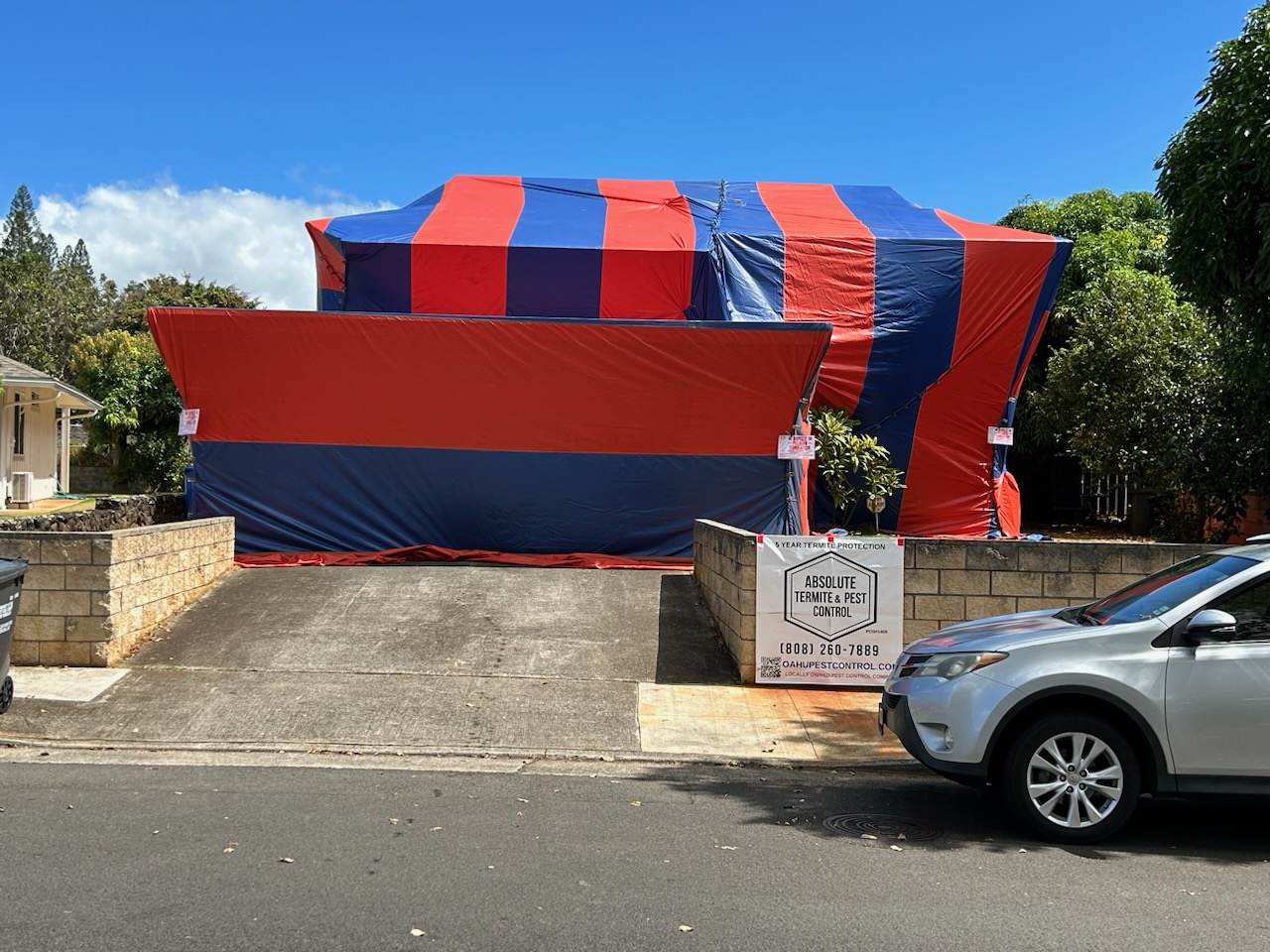Understanding Powder Post Beetles in Your Home and the Role of Pest Control
- Absolute Pest Control Hawaii PCO#1409
- Jul 2, 2025
- 4 min read
Powder post beetles can wreak havoc in your home if they're left unchecked. These small pests often go unnoticed until significant damage has been done. If you think these beetles have taken residence in your home, knowing how they operate and how pest control can help is crucial.
What Are Powder Post Beetles?
Powder post beetles are wood-boring insects found in several families, mainly Lyctidae, Bostrichidae, and Anobiidae. They can tunnel through some of the toughest woods, leaving behind a fine, powdery dust known as frass. Adult beetles vary in size, typically ranging from 1/8 inch to 1 inch in length.
These pests favor hardwoods such as oak, cherry, and ash. You'll often find them not just in structural elements but also in wooden furniture and flooring. A study by the University of Kentucky revealed that approximately 10% of homes in the U.S. face some form of wood-destroying insect infestation, with powder post beetles being a notable offender.
Signs of Infestation
Identifying a powder post beetle infestation early on can save you from costly repairs. Here are some red flags to watch for:
Fine Wood Dust or Frass: If you spot a powdery substance around small exit holes, it's a sign that adult beetles are emerging from the wood.
Small Pinholes: Look for tiny holes in wood surfaces, which indicate the wooden structure is being invaded.
Weak or Hollowed Wood: Tapping on wood that sounds hollow can be a strong indication of extensive tunneling.
Live Beetles: Spotting adult beetles near wooden areas is a clear confirmation of an infestation.
If you see multiple signs, taking action sooner rather than later is essential.
The Life Cycle of Powder Post Beetles
Understanding the lifecycle of powder post beetles can help you combat them effectively. Their lifecycle includes:
Egg Stage: Females lay eggs in small cracks or holes in wood, typically in damp, dark areas.
Larval Stage: Once the eggs hatch, larvae burrow into the wood and can feed for several years, depending on environmental factors. Research shows that larvae can stay hidden for up to 3 years before fully developing.
Pupal Stage: After feeding, the larvae pupate within the wood before emerging as adults.
Adult Stage: Once mature, they seek mates and lay eggs, continuing the cycle and increasing the likelihood of repeat infestations.
Why Are They a Problem?
The main concern with powder post beetles is their ability to weaken wooden structures over time. These pests can significantly reduce the strength and integrity of the wood, making it especially dangerous in older homes with existing weaknesses. The National Pest Management Association states that structural damage from wood-destroying organisms can lead to repair costs exceeding $10,000 in some cases.
Besides structural issues, these infestations can also deteriorate the visual appeal of your home. Unpleasant holes, piles of frass, and compromised wood can decrease property value. Many homeowners face the double burden of repairing structural damage and restoring aesthetic appeal.
How Pest Control Can Help
If you believe powder post beetles have invaded your home, acting quickly is vital. Pest control can effectively address the issue through several methods.
1. Professional Inspection
Pest control professionals perform detailed inspections, focusing on areas like attics, basements, and crawl spaces—places often overlooked by homeowners. A professional inspection can reveal hidden infestations before they escalate.
2. Treatment Options
Once confirmed, pest control technicians can suggest various treatments, including:
Chemical Treatments: Specialized insecticides target wood-boring pests, killing larvae and preventing adult emergence.
Boric Acid Treatments: This safer alternative effectively combats powder post beetles without the dangers associated with harsher chemicals.
Heat Treatment: Raising the temperature in infested areas can kill beetles and larvae, offering an effective non-toxic solution.
Fumigation: For severe infestations, whole-structure tenting and fumigation ensure treatment reaches even the most challenging spots. According to pest management guidelines, this method can eliminate up to 99% of infestations.
3. Prevention Strategies
Addressing the current issue is only part of the solution. You must also prevent future problems. Here are effective strategies:
Moisture Control: Reducing humidity can deter beetles, which thrive in moist conditions.
Proper Ventilation: Ensuring good airflow helps keep wooden structures dry and less attractive to pests.
Sealing Cracks: Closing cracks and entry points can significantly lower the risk of future infestations.
DIY Methods
For those who prefer DIY solutions, here are a few approaches. Keep in mind these may not be as effective as professional services:
Vacuuming: Regular vacuuming helps eliminate frass and keeps infestations at bay.
Borate Treatments: Applying borate solutions to wooden surfaces can act as a deterrent.
Keep Wood Dry: Using dehumidifiers and improving drainage around your home can lower moisture levels in wood.
While these methods can help, professional pest control remains the most reliable route to manage powder post beetle infestations effectively.
Take Action to Protect Your Home
Powder post beetles may be small, but they can cause serious damage to your home. By understanding their lifecycle, recognizing the signs of an infestation, and knowing how pest control can help, you position yourself to protect your property effectively.
If you find yourself facing this issue, reach out to pest control experts. Their knowledge and specialized tools can ensure your home remains safe and inviting, free from the destructive impact of powder post beetles.












Comments